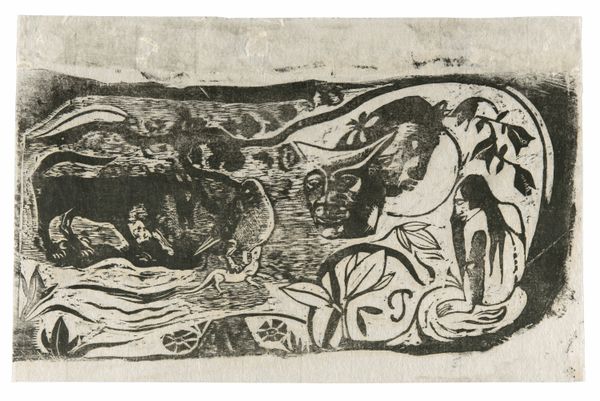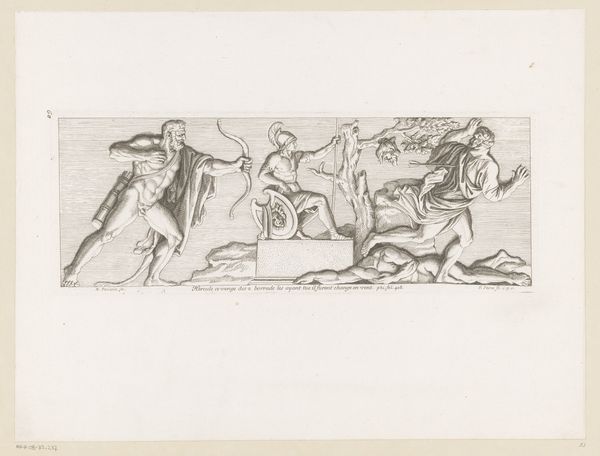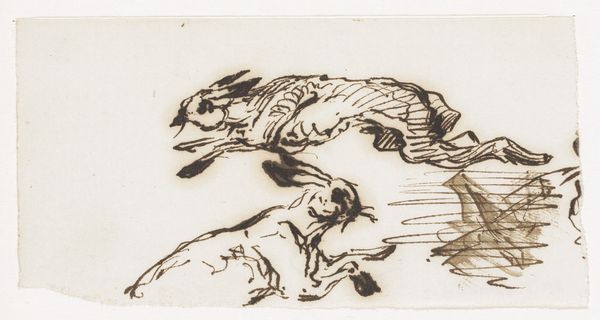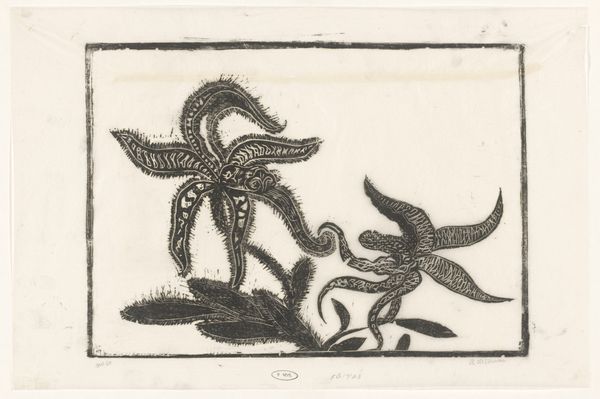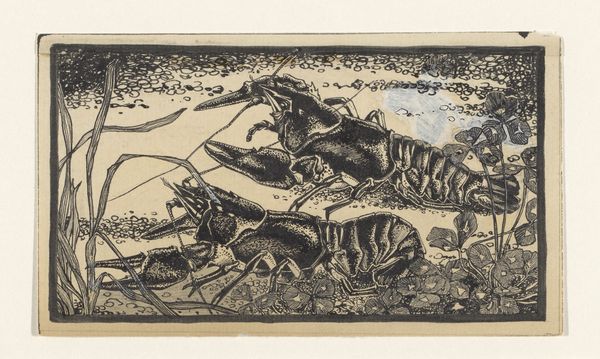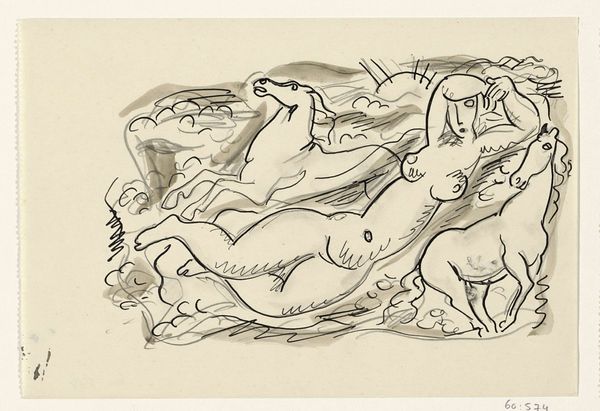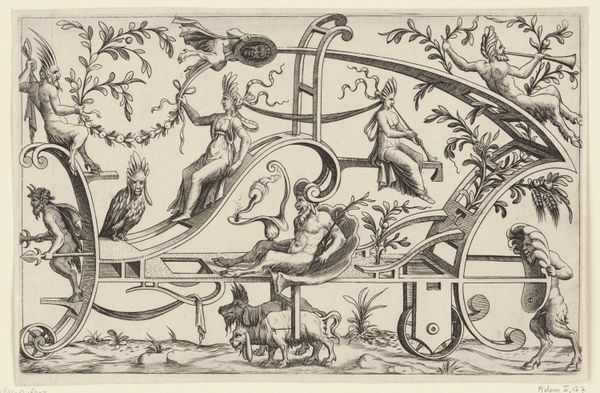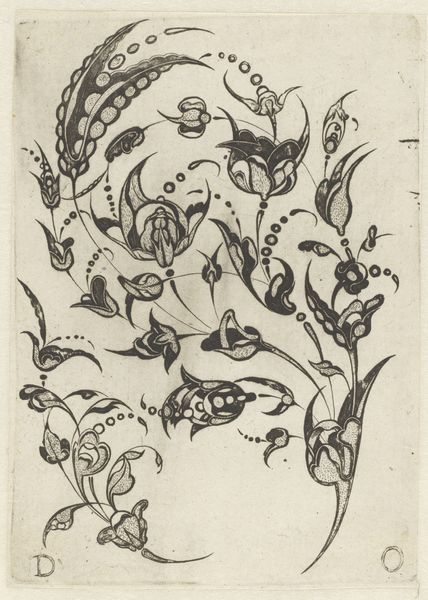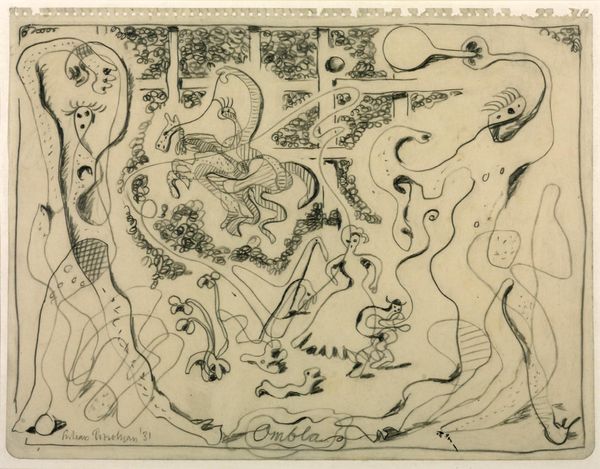
drawing, print, ink, woodcut, pen
#
drawing
#
art-nouveau
#
pen drawing
#
animal
# print
#
pen illustration
#
bird
#
figuration
#
ink line art
#
ink
#
linocut print
#
woodcut
#
line
#
pen
Dimensions: height 112 mm, width 315 mm
Copyright: Rijks Museum: Open Domain
Curator: At first glance, I find myself intrigued by the stark contrast of black ink against the off-white paper—the almost frenetic energy that the lines evoke. Editor: Indeed! What you're observing is Theo van Hoytema’s “Vogels en Apen,” birds and apes, likely crafted between 1878 and 1917. We're viewing a drawing made with ink; either as a pen drawing or print, it’s open for consideration. Given his experimentation, the artist probably deployed techniques related to pen drawing and linocut. Curator: Linocut makes perfect sense when we look at how each figure is emphasized by line alone, lending the animals—particularly the birds—an animated feeling. You feel movement even though it’s all captured so graphically and compactly. Editor: Let’s delve into the making. Hoytema was very involved in printmaking, even making his own lithographic stones. He was part of a movement advocating for art's accessibility and the value of craft production and championed what others had previously seen as a commercial trade, to uplift what others would previously look down on, the tradesman, designer and manual printer. It highlights the democratizing aspect of art. Curator: I see the clear embrace of the Art Nouveau style in those curling vines. The border itself feels integrated with the image, and encloses this chaotic yet harmonious world. The pattern-like placement of animals, birds and monkeys gives a two-dimensional decorative rhythm that feels very unified. Editor: These were years of rapid industrialization when the value of manual labor, like Van Hoytema's prints, came to reflect social unease regarding the nature of artistic creation and manual production. It reflects larger trends concerning class division in society. Curator: Looking at the details closer, you also note that this isn’t a clinical, academic study. Hoytema renders these animals with a playful naiveté, adding an undercurrent of lighthearted humor in such busy composition. It's refreshing. Editor: Absolutely! His unique blend of artistry and craftsmanship brings art and labor to the fore—reminding us to assess not just what we see, but how the artwork came to exist within its socio-economic climate. Curator: It shifts how you think about a drawing. Seeing “Vogels en Apen” makes one pause, indeed. Editor: For me too; looking beyond the immediate beauty lets one consider labor as an expressive, purposeful undertaking in addition to aesthetics.
Comments
No comments
Be the first to comment and join the conversation on the ultimate creative platform.


